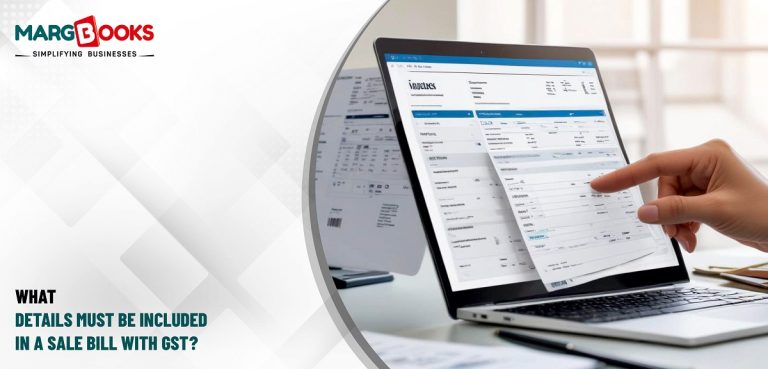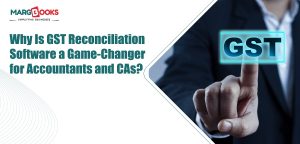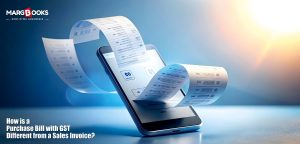Getting your GST paperwork wrong feels like walking through a minefield, doesn’t it? One missing detail on your invoices, and suddenly you’re dealing with compliance headaches that could’ve been easily avoided. Creating a proper Sale Bill with GST isn’t rocket science, but it does require knowing exactly what information the tax department expects to see.
Many small business owners scramble through this process, often missing crucial elements that could land them in hot water later. Good news, though, once you understand these requirements, billing becomes straightforward and stress-free.
What Makes a Sale Bill with GST Legally Valid?
Let’s cut straight to the chase. Your GST sale bill isn’t just a receipt. It’s a legal document that needs specific information to keep you compliant with tax regulations.
Think of it as a passport for your transaction. Just as a passport needs certain stamps and details to get you through customs, your sales bill needs particular elements to satisfy GST requirements. Miss one piece, and you might face questions from tax authorities down the road.
The 12 Must-Have Elements on Every GST Invoice
What does every compliant sale bill with GST absolutely must contain? These are as follows:
- Business name and complete address of the supplier
- GSTIN (GST Identification Number) of the supplier
- Invoice number and date – each must be unique and sequential
- Customer’s name and address (for B2B transactions)
- Customer’s GSTIN (when applicable)
- Description of goods or services sold
- HSN/SAC codes for products/services
- Quantity and unit of measurement
- Rate per unit and total value before tax
- GST rate applied (CGST, SGST, IGST percentages)
- The GST amount is calculated separately
- Total invoice value, including all taxes
Sounds overwhelming? Software such as Online GST Billing Software handles most of these details automatically, so you don’t have to memorize this entire list.
Breaking Down the Technical Stuff
Till now, we’ve covered the complete checklist. Let’s dive deeper into some of these requirements. Understanding the “why” behind each element helps you get it right every time, rather than just going through the motions.
GSTIN and Business Details
Your GSTIN works such to your business’s tax fingerprint. It identifies you uniquely in the GST system, so it goes on every single invoice you create. Along with this, your complete business address ensures there’s no confusion about who issued the bill.
Some businesses get lazy here and use abbreviated addresses. Don’t do this, always use your full registered address as it appears on your GST registration.
Invoice Numbering That Works
Here’s where many businesses trip up. Your invoice numbers can’t be random – they need to follow a logical sequence. Think of it as the numbering of pages in a book. You can’t jump from page 5 to page 47 without explanation.
Most softwares handles this automatically, creating sequential numbers that keep tax officers happy during audits.
Customer Information Requirements
The amount of customer detail you need depends on your transaction type. Selling to another business? You’ll need their complete details, including GSTIN. Selling directly to consumers? Basic name and address usually suffice for transactions above certain thresholds.
This is where MargBooks shines; it automatically adjusts the required fields based on your transaction type, so you never miss important customer information.
Product Details and HSN Codes
Every item you sell needs a proper description and its corresponding HSN (Harmonized System of Nomenclature) code. These codes categorize your products for tax purposes. Selling electronics? There’s a specific HSN code. Providing consulting services? Different code entirely.
Don’t worry about memorizing thousands of codes. A good Accounting Management Software includes HSN databases that suggest the right codes as you type product names.
Getting the Tax Calculations Right
This is where human error loves to creep in. GST calculations involve several components:
- Base amount (your selling price)
- CGST (Central GST)
- SGST (State GST) or IGST (Integrated GST)
- Final total including all taxes
Manual calculations here are doing surgery with gardening tools, technically possible, but why risk it? Automated systems prevent calculation errors that could trigger compliance issues later.
Special Scenarios to Watch Out For
Inter-state sales require IGST instead of CGST+SGST. Export transactions follow different rules entirely. Composite scheme dealers have simplified requirements but stricter limitations.
Each scenario has unique documentation needs. These recognize the situations and adjust your invoicing requirements accordingly, reducing the chance of compliance mistakes.
Digital vs. Manual: Why Software Makes Sense
Let’s be honest, creating compliant GST bills manually is tedious and error-prone. You’re constantly cross-checking rates, calculating percentages, and ensuring you haven’t missed any required fields.
Modern billing software eliminates this stress. It validates information as you enter it, suggests missing details, and calculates taxes automatically. The time saved easily justifies the investment, especially considering the cost of compliance mistakes.
Common Mistakes That Cost Businesses
Even experienced business owners make these errors:
- Using incorrect HSN codes
- Missing customer GSTIN for B2B sales
- Inconsistent invoice numbering
- Wrong GST rates for specific products
- Incomplete business addresses
Each mistake potentially triggers notices, penalties, or audit queries. Prevention through proper systems costs far less than correction after problems arise.
Conclusion
Creating compliant GST documentation doesn’t have to feel like solving complex puzzles. Understanding what goes into a proper Sale Bill with GST protects your business from unnecessary compliance headaches while keeping your tax obligations clear and organized.
The key elements, from GSTIN details to accurate tax calculations, work together to create legally valid invoices that satisfy regulatory requirements. Smart business owners recognize that investing in proper billing systems, MargBooks, pays dividends through reduced errors, saved time, and stress-free tax compliance. Your future self will thank you for getting these details right from the start.




